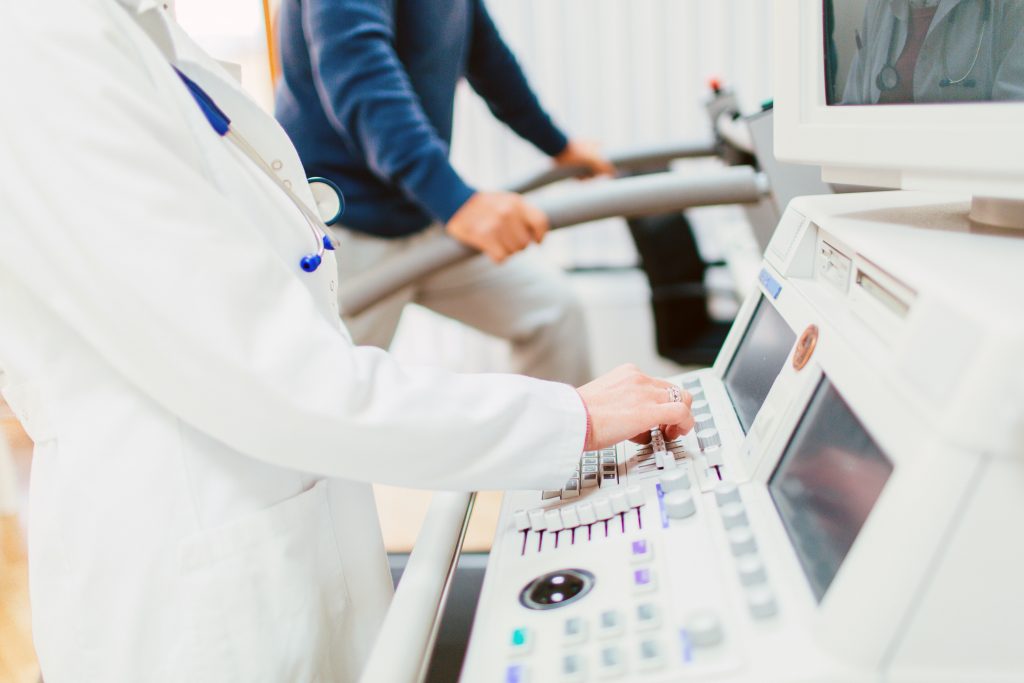To avoid feeling short of breath (dyspnea), Alphas with lung disease often limit their physical activity. This can cause a downward spiral. You don’t exercise because it makes you feel bad. So, your fitness level drops. And, the next time you exercise, you feel even worse.
Download Exercise for Alphas with Lung Disease as a PDF.
Use it or lose it!
The less you do, the less you feel able to do, and the less fit you become. This is called progressive deconditioning. The following factors affect how fast you lose fitness:
- How fit you were to start with
- How long you’ve been exercising
- When you stopped exercising regularly
If you’ve been hesitant about exercising we have some good news for you: It’s never too late to exercise. You may have to start slowly and carefully, but physical activity can be part of your overall treatment plan.
Getting the green light from your doctor
Before you start any fitness program, you’ll need a medical exam. Your doctor should check out your cardiac risk and exercise capacity. With Alpha-1 lung disease, you want to make sure you don’t put too much stress on your heart and lungs.
Your doctor may ask you to do a supervised Exercise Tolerance Test on a treadmill, a stationary bike, or with a walking test in their office. During the test, you’ll wear a cardiac monitor and a pulse oximeter. Your doctor will look at your heart function and blood oxygen levels while you exercise. This helps them assess how much exercise will be safe and effective for you.
A prescription for better health
After your test, your doctor may give you an “exercise prescription.” This details how often, how long, and how hard you should exercise. They may also refer you to a pulmonary rehabilitation program, if one is available in your area.
Pulmonary rehab programs provide many benefits to people with lung disease. However, they aren’t covered by most insurance companies. If you’ve been denied coverage, consider these options:
- Appeal the decision: Ask your doctor to write a note that says the program is essential to your health. Some insurers will pay for an initial assessment and treatment plan, plus a specific number of follow-up visits.
- Follow your prescription: You can create a “do-it-yourself” program at home or at a local gym.
- Try cardiac rehab: Ask your doctor to refer you to a cardiac rehab program. Many insurers will cover expenses for this type of program. You can ask the trainers to give you a modified treatment plan that works for your lung condition.
How does exercise help you?
You may not notice benefits after just one day. But if you exercise on a regular basis, your health will improve over time. You may even feel like you can breathe more easily.
Exercise improves your heart’s ability to pump blood and deliver oxygen to your body. Better circulation and oxygen delivery means you won’t feel short of breath as often.
How else can exercise help? It can give you more
- Energy for daily activities
- Strength and endurance
- Body awareness and confidence
- Insight into what makes your symptoms flare-up
- Restful sleep
Plus, exercise boosts your mood, decreases anxiety, and helps your posture.
What can you do about shortness of breath?
Most people with lung disease have shortness of breath. That doesn’t mean you can’t take care of daily tasks like shopping or cleaning. You can learn to adjust your breathing during activities to conserve energy and limit shortness of breath.
Can exercise reverse Alpha-1 related lung disease?
Exercise can’t reverse lung disease, but it can change the way you feel and function. If you have moderate to severe lung disease, exercise can help you stay fit and strong, which improves your quality of life. In summary, exercise is good for everybody — especially those with lung disease!
For more in-depth information on this topic, please visit the Big Fat Reference Guide (BFRG). If you are enrolled in AlphaNet’s Subscriber Portal, you can access the BFRG here.
Download Exercise for Alphas with Lung Disease as a PDF.

